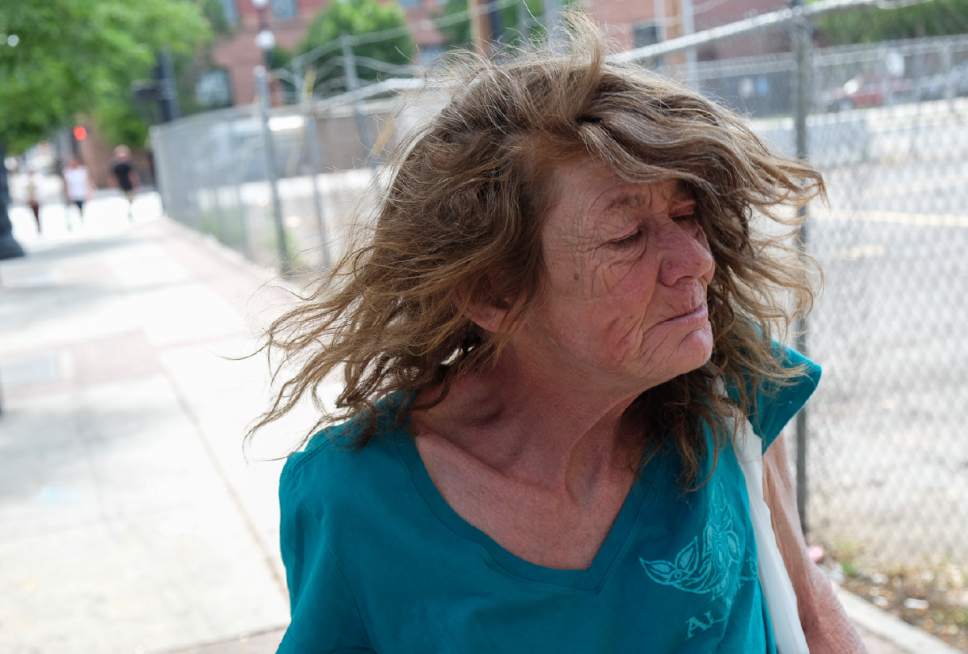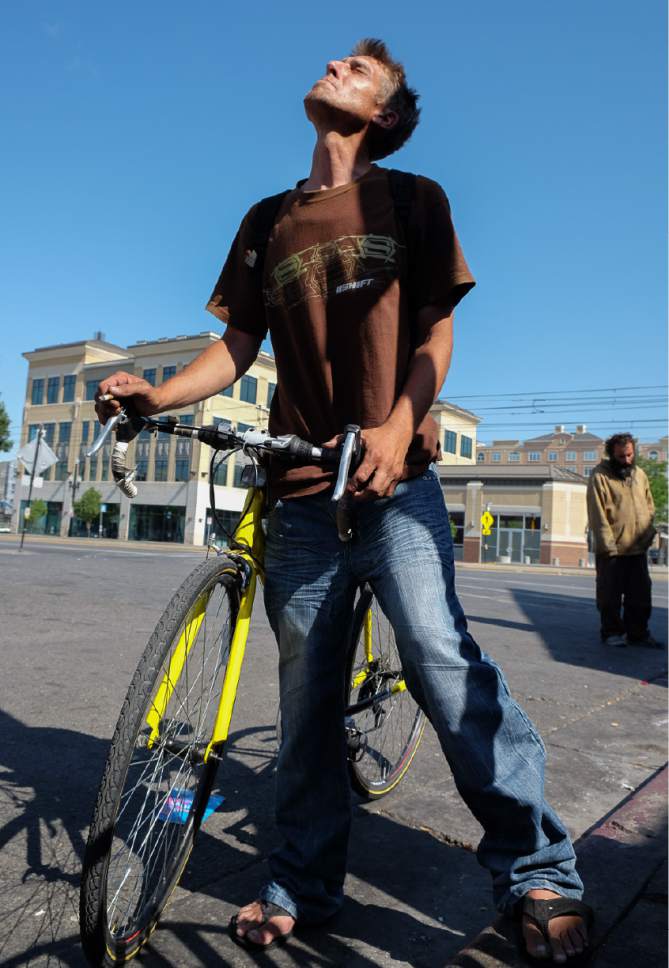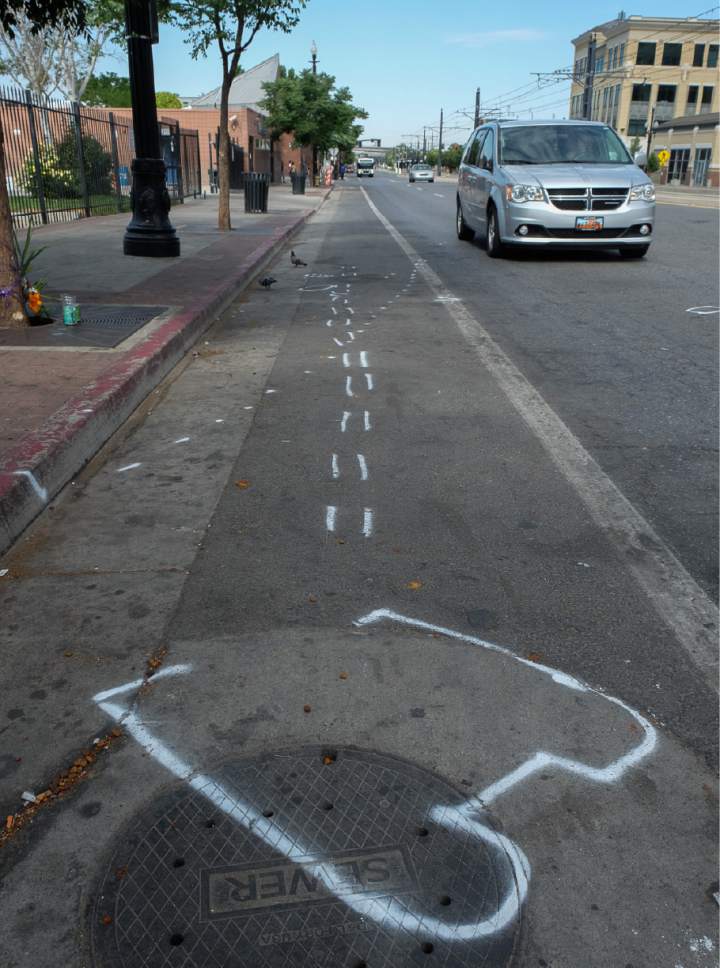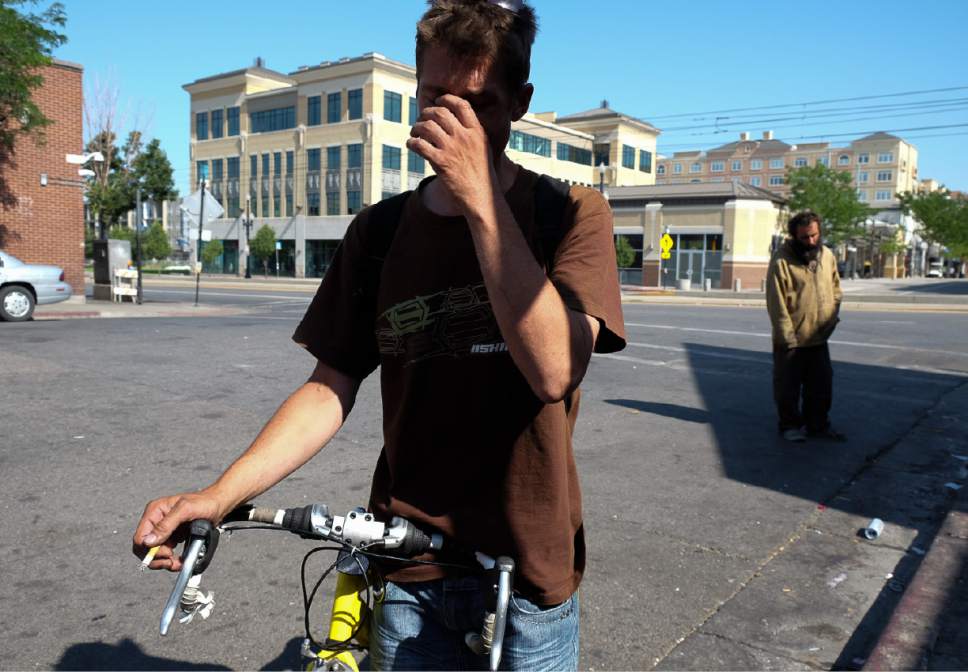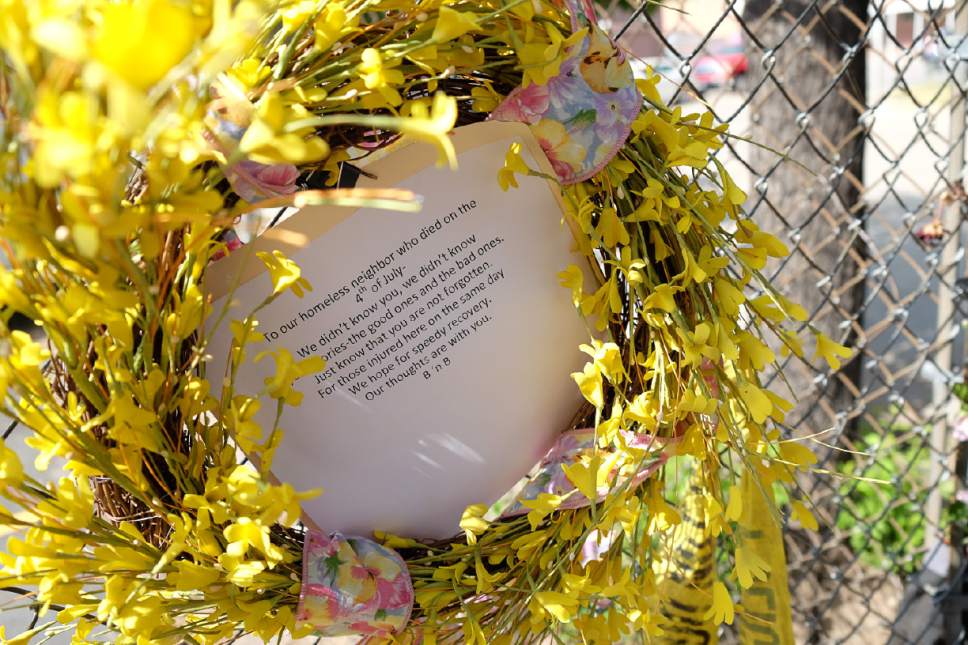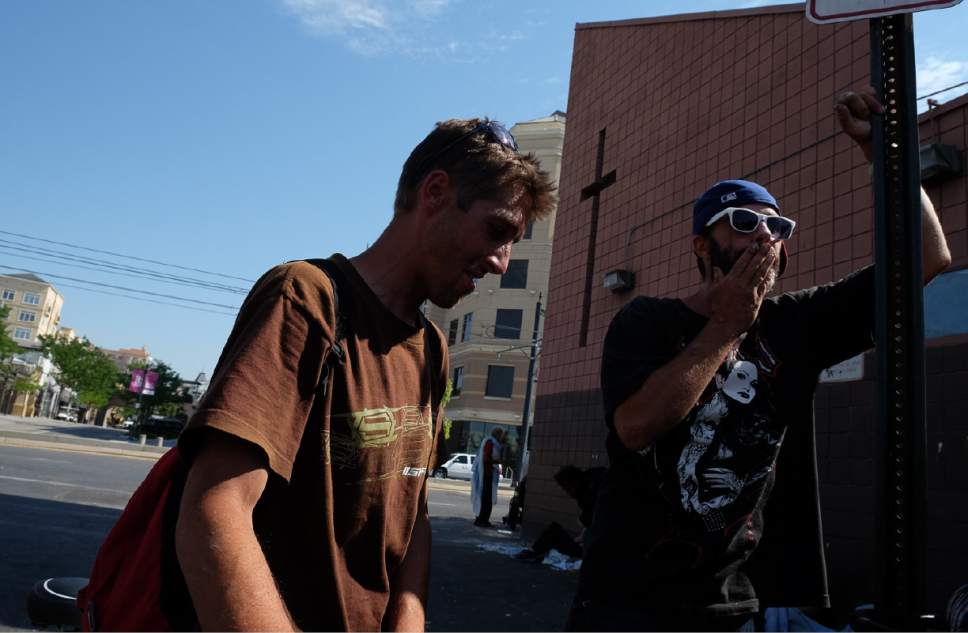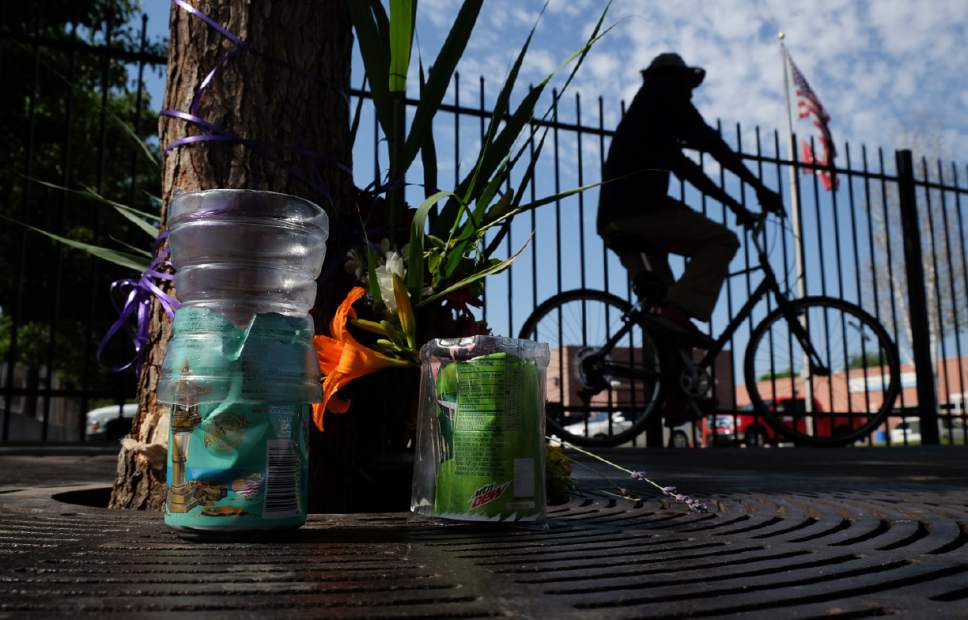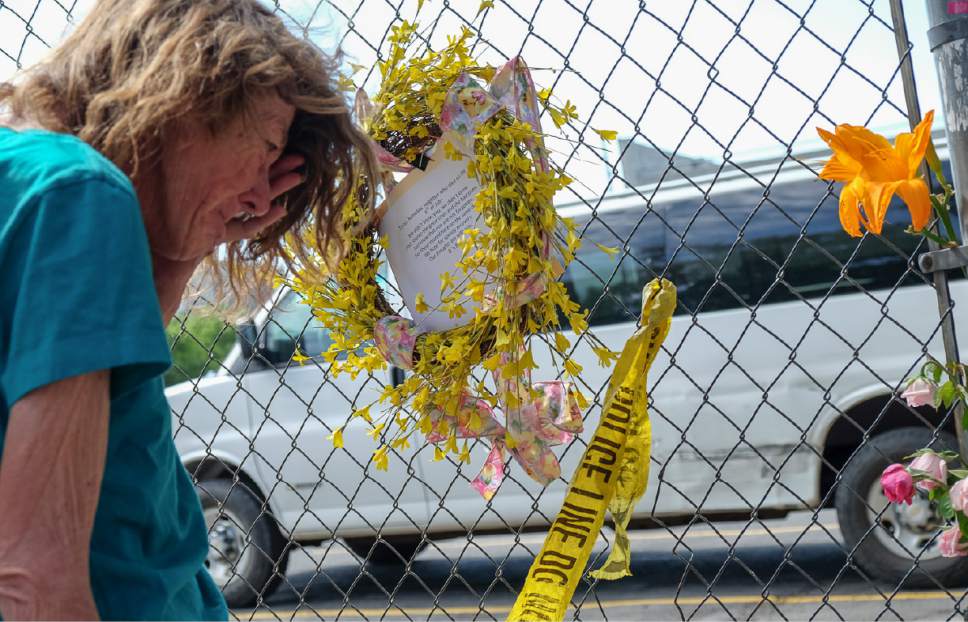This is an archived article that was published on sltrib.com in 2017, and information in the article may be outdated. It is provided only for personal research purposes and may not be reprinted.
News is spreading across the country on the state of homelessness in downtown Salt Lake City — and it isn't pretty.
Just over the Fourth of July holiday, a professional baseball player was attacked and suffered a concussion. And a car plowed into a group of homeless people on a sidewalk, killing one and sending five others to the hospital.
These are just the latest in a string of events that continues to frustrate officials, police and business owners surrounding the effort to make the Rio Grande area safer.
Utah House Speaker Greg Hughes was more than a little perplexed Wednesday in the aftermath of the auto-pedestrian accident, which occurred Tuesday evening around the corner from The Road Home.
"The violence and what is going on there is escalating," Hughes said Wednesday. "When it gets that out of hand, you can have a discussion about the National Guard with a straight face."
The Draper Republican explained that he wasn't asking Gov. Gary Herbert to call out the Guard just yet. But Hughes is among state lawmakers, city and county officials, as well as service providers, who have been working intensively for over three years to improve the neighborhood around Pioneer Park, the homeless shelter and other service centers.
Their efforts look to be falling short.
"It's just a disgrace," Hughes said. "I worry that we're not ready to do the things necessary to clean that area up."
Herbert's office said Wednesday the governor was on a rural tour and could not be reached for comment.
Saturday, a homeless man attacked Las Vegas 51s baseball relief pitcher Logan Taylor in an attempted robbery.
When Taylor refused to hand over his wallet, the man, identified as Joshua Cruz, hit him over the head with a tire iron, police said.
News of the assault grabbed national headlines.
Then, on Tuesday evening, a car jumped the curb and plowed into a group of homeless people on 200 South near 400 West about 6 p.m., leaving one dead and five injured.
As folks around The Road Home recalled the incident, they acknowledged that almost anything is possible around Rio Grande Street.
"I turned around and went, oh sh—," Matt Clark said Wednesday. "I went to that girl, Kendra. She was lying on the ground. I saw blood in her mouth. I didn't know if she was alive."
The word on the street is the woman, known in the neighborhood as Kendra, was the single fatality of a hit-and-run that police still are investigating. The cause remains unknown. The driver fled.
Five other adults were hospitalized — one in critical condition. By Wednesday afternoon, police had not identified the deceased.
Violence is no stranger to people who live in around the shelter, Clark said. "It's the most dangerous part of the city."
"I've almost had my ear cut off," he said, pointing to a scar. "And I've been hit over the head."
Several feet away, two men on the sidewalk were sticking needles in their arms. Drugs and theft are part of the landscape in the area that borders on lawlessness — despite the on-and-off heavy police presence.
Wednesday, police released the name of a woman who may have been behind he wheel of the car in the deadly crash.
Shutney Lee Kyzer, a 37-year-old with a prison record, was identified as the possible driver.
She fled the scene, but police found and arrested her later Wednesday.
A passenger in the car, however, remained and is cooperating with police.
Kyzer was incarcerated at the Utah State Prison on 2009 burglary, kidnapping and robbery convictions. Kyzer was paroled in April.
The car ran into a group that regularly hung out and camped in the location around the corner from the shelter, according to witnesses.
"I saw the car pop the curb and debris went flying everywhere," said Josh Schneider. "I ran to the shelter for help."
The crash knocked over a blue shopping cart and scattered shoes, bags and a wheelchair into the street.
Among those hit was a man in a wheelchair, said Rubin Scuarez.
"A car drove by, and I heard a ruckus," he said. "I went over there to try and help. One lady was booking out of there."
Scuarez chased a woman in a red shirt, he said. "I got to the TRAX station but I couldn't see anybody in red, so I gave up."
A small makeshift memorial was set up at the tree where the woman died. It included a bouquet of flowers.
A woman looking at the site, who identified herself only as Bell, said she was saddened by incident.
"They were here, because they didn't want to be down by the shelter," she said. "There's too much fighting over there."
Bell said the dead woman was Kendra, who was well liked among the homeless population.
"She was always nice to me," Bell said. "She was just a nice girl."
A passer-by gasped when Bell told him Kendra was dead.
"Oh, no," said the man, who identified himself as Oggy. "She's like the best lady ever. I got her some shoes just yesterday."
Life goes on in and around Rio Grande Street. People shrug and move on. The homeless population includes many with mental illness or drug addiction — or both. Violence can erupt at any time.
It's not a place where you can ever relax, explained Clark.
"Everybody's trying to rob you," he said. "Never take your eyes off your stuff. They steal bikes, phones, everything."
The Road Home can accommodate a maximum of 1,100. But dozens, perhaps hundreds, live outdoors in the area. The shelter is slated to be closed by June 30, 2019.
Whether all of the homeless will leave the area is unclear. Resources, such as the Fourth Street Clinic, will remain in the area.
Hughes said he isn't willing to wait two years for things to change in the area. He doesn't fault the Salt Lake City Police Department, which he said is making every effort to keep the area from sliding into total chaos.
Nonetheless, he said, conditions must change.
"We can't afford to hide from it," Hughes said. "If we don't do something, it's going to spread to our parks and libraries."
— Tribune reporters Bob Mims and Jessica Miller contributed to this story


